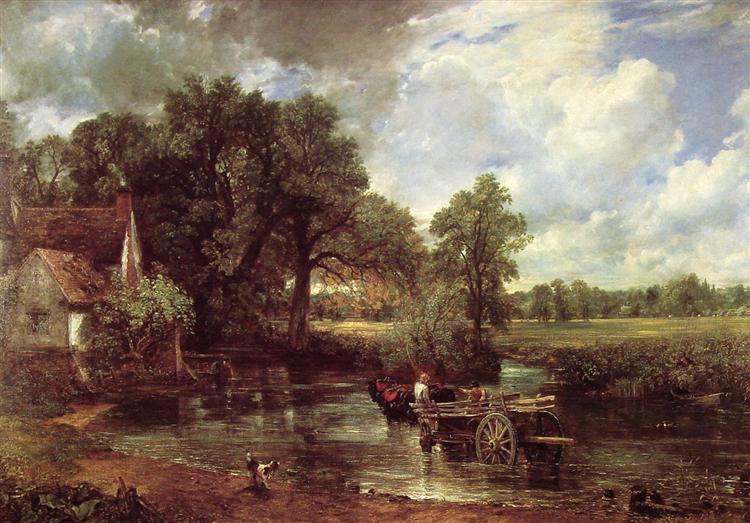Constable John – “Hay Wagon”
Throughout his life, John Constable worked hard on himself and his technique to rightfully be called the greatest landscape painter of Great Britain of the 19th century. His unceasing desire for perfection and attentive attitude to the origins of painting led him to the pinnacle of fame and fame.
Over the years of his work, he developed his own unique style, deviating greatly from the pictorial norms and rules accepted at that time. He expressed with sincere spontaneity his own vision of the beauty of this world.
The plots of his paintings are simple and uncomplicated, but, nevertheless, the canvases are full of majesty and grace, the harmony of nature is felt in them. John Constable was very fond of working in the open air, where he merged with the surrounding nature and painted pictures full of light and dynamics.
John Constable’s painting “The Hay Wagon” is a symbol of English landscape painting. On it, the artist depicted the everyday life of English peasants. On a warm, calm summer day, horses slowly cross the ford, the dog watches them closely. The dog’s gaze shifts the viewer’s attention to the background of the picture, where the artist depicted the surrounding countryside, stunning in beauty and grandeur. The realistically depicted water was painted with titanium white and tiny strokes – this technique later became known as “Constable’s snowflakes.”
After painting, the painting was exhibited at the Royal Academy, but despite many positive reviews, it did not find its buyer. She made a real splash three years later in Paris.
Year of painting: 1821.
Dimensions of the painting: 130 x 185 cm.
Material: canvas.
Writing technique: oil.
Genre: landscape.
Style: romanticism.
Gallery: National Gallery, London, UK.
